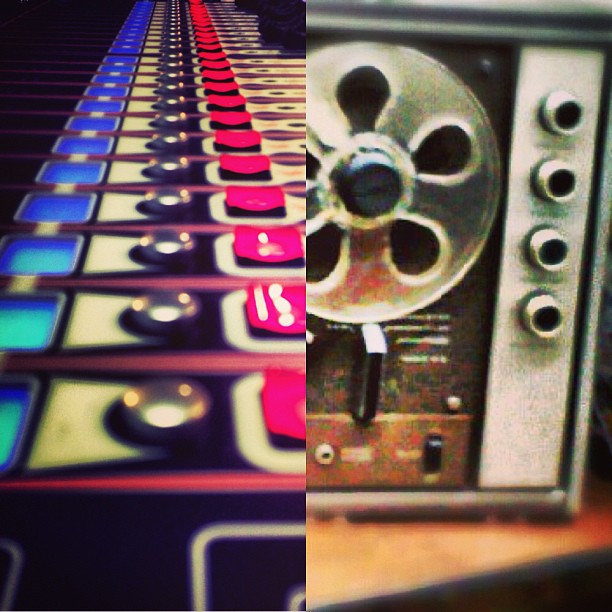Recording From Your Digital Console: A New Series
I've decided to take a short break from the lighting world to focus on two other parts of my field: live sound and recording. I may have mentioned before that I work at SE Systems in Greensboro, NC. SE Systems is a pro audio, lighting and video sales and production company. A month or so ago we had a customer that was setting up a recording system for a house of worship. He was having some issues getting things working together well so he gave us a call. I ended up walking him through the setup over the phone. I have since decided to write about it so that others may benefit from what we learned figuring out this job.
The Set Up
All of the church's stage inputs were sent from the stage to the console via an analog snake. The console, a Yamaha LS9-32, had two Audinate MY-16-AUD Dante Network Cards installed. The console's direct outs were routed through the Dante cards. The Dante cards fed 32 channels of audio, via Cat 5 network cable, to a custom built computer in a broadcast room backstage. The computer used Dante's Dante Virtual Sound Card to interface with Pro Tools 10.
The Problem
Dante Virtual Soundcard turns the computer's network card into an audio interface, allowing the computer to bring in audio from devices using the Dante format. The church had an Avid M-Box to connect to the computer for connecting a pair of studio monitors in the broadcast room. Unfortunately with some computers and some recording software, you can only use one sound card or interface at a time. This meant that there was no local audio monitoring for the recording engineer to listen to, unless he saved the recording session, and re-opened it using a different audio interface on the computer. Another option would have been to get a Dante device for the broadcast room, but that would have been rather expensive.
The Solution
For now, this particular house of worship is simply just recording their services and saving the session. Then mixing the recording down later using the Avid M-Box for monitoring. It works but, I think it could be better. I'll unpack how to do this well over the next few post. My plan right now is to break this down into a few sections:
- Computer Selection- What to look for in a recording computer
- Digital Audio Workstation Selection- This is the actual recording software. We'll reffer to it as the DAW or DAW softare just to save space from here on out.
- I'm running into two digital audio formats pretty often at work. A lot of people use Yamaha consoles, and the Dante cards are widely available. DigiCo is also making huge in-roads into the industry. They use a digital audio format called MADI. I'll take some time and break down how to set up each type.
- Finally I'll go over some tips on how to set up your DAW, how to patch things, and some cool tricks we can use to solve monitoring problems.
I'm going to wrap this up by saying that these aren't the end-all/be-all solutions. They are tips to get started fast. I will also warn you that I am extremely opinionated. I've been helping people get recording systems set up for many years. I've run into all kinds of problems. There are some systems and some DAW's that I have run into problems with. There are other systems that I have run into fewer to no problems. I have a heavy bias toward the latter. I also prefer certain things just because they fit my particular workflow or I like the way they look or feel.
~Andy

